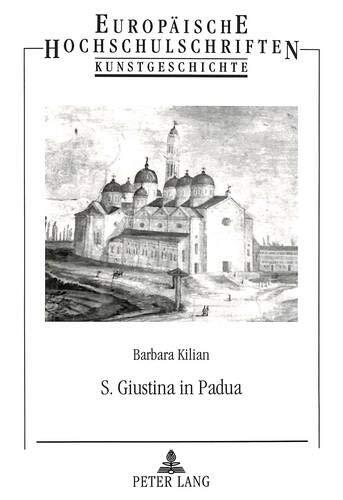
S. Giustina in Padua: Benediktinische Sakralarchitektur zwischen Tradition und Anspruch
由
Barbara Kilian
还没有评分
Action & Adventure
格式
平装书
页数
458
语言
德语
已发布
Jun 1, 1997
出版商
Peter Lang GmbH, Internationaler Verlag der Wissenschaften
ISBN-10
3631312113
ISBN-13
9783631312117
描述
Barbara Kilian’s exploration of S. Giustina in Padua delves into the intricate world of Benedictine sacred architecture, revealing the delicate balance between time-honored traditions and contemporary aspirations. Her work draws on a wealth of historical and architectural analysis, showcasing the significance of this ancient church within not only the local context but also its broader European relevance. Through her meticulous examination, Kilian highlights how S. Giustina stands as a testament to the evolution of religious spaces and the ideals that shaped them.
The book is rooted in Kilian's scholarly research, initially presented as her thesis at the University of Heidelberg. It emphasizes the architectural elements that define S. Giustina, inviting readers to appreciate the structural and aesthetic choices that reflect the values and beliefs of the Benedictine order. Through detailed descriptions and critical insights, Kilian articulates the church's role in the spiritual and cultural life of Padua.
Kilian intertwines architectural history with cultural narratives, providing readers with an intimate portrait of a location steeped in tradition yet responsive to modern demands. Her analysis includes the interplay between form and function, illustrating how the architecture of S. Giustina serves as a canvas for both worship and community engagement.
Ultimately, Kilian’s work contributes to a deeper understanding of how sacred architecture can embody the complexities of faith and practice. By examining S. Giustina, she challenges readers to reflect on the ongoing dialogue between past and present in the realm of religious architecture, making this a crucial read for scholars and enthusiasts alike.
The book is rooted in Kilian's scholarly research, initially presented as her thesis at the University of Heidelberg. It emphasizes the architectural elements that define S. Giustina, inviting readers to appreciate the structural and aesthetic choices that reflect the values and beliefs of the Benedictine order. Through detailed descriptions and critical insights, Kilian articulates the church's role in the spiritual and cultural life of Padua.
Kilian intertwines architectural history with cultural narratives, providing readers with an intimate portrait of a location steeped in tradition yet responsive to modern demands. Her analysis includes the interplay between form and function, illustrating how the architecture of S. Giustina serves as a canvas for both worship and community engagement.
Ultimately, Kilian’s work contributes to a deeper understanding of how sacred architecture can embody the complexities of faith and practice. By examining S. Giustina, she challenges readers to reflect on the ongoing dialogue between past and present in the realm of religious architecture, making this a crucial read for scholars and enthusiasts alike.